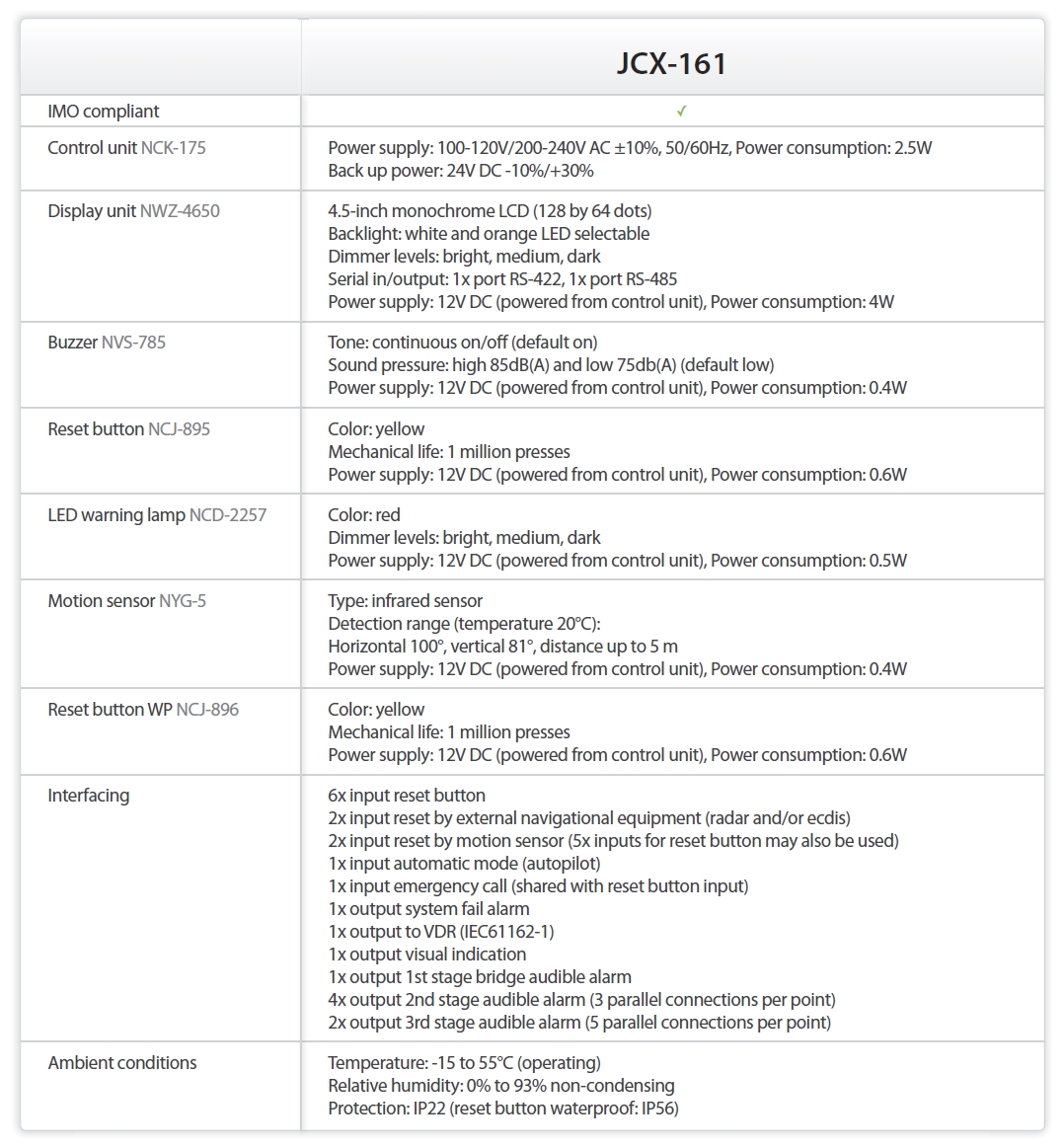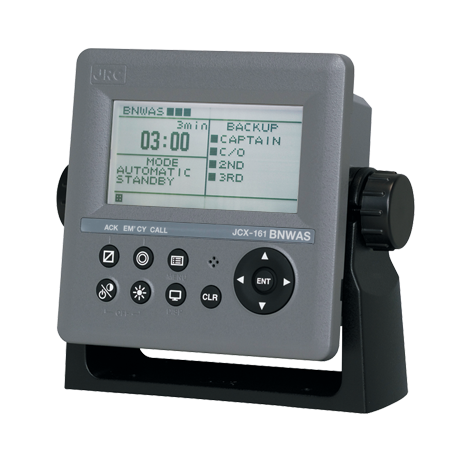Products
JCX 161
The Bridge Navigational Watch Alarm System (BNWAS) main purpose is to monitor the presence of watch officers and their alertness for early detection of unsafe sailing conditions.
Features
The Bridge Navigational Watch Alarm System (BNWAS) main purpose is to monitor the presence of watch officers and their alertness for early detection of unsafe sailing conditions. JRC’s BNWAS is also able to manage other onboard equipment alarms. When any connected equipment alarm is activated, the BNWAS displays a list of alarm information automatically. When the officer fails to acknowledge within pre-set intervals, visual and audible alarms will be generated in the wheelhouse and other crew spaces as necessary.
Alarms
The JCX-151/152 initiates a visual indication and alarm with the following sequence. The user can define an interval sequence of between 3 and 12 minutes. This will only give a visual indication. The alarm can be reset at any point in time. There is a visual indicator of the time countdown. After the preset interval, an alarm sequence will go into effect.
- First stage is a 15s visual alarm on the bridge.
2. Second stage is a 15s audible alarm on the bridge.
3. Third stage is a 90s audible alarm in the back-up officer and/or master’s area.
4. Fourth stage (when the 90s audible alarm is not reset) the crew area will have audible alarm.
Resetting
The JRC BNWAS system has a range of standard (and optional), possibilities to reset the timer for visual indication and audible alarm. By simply connecting the BNWAS to JRC navigation equipment, such as the JMA-9100 series radars or JAN-901B ECDIS, the alarm is temporarily disabled when the watch officer is physically operating the controls.
Difference between models
JRC will have two models available, the JCX-151 with LED indicators and the JCX-152 with a 4.3- inch LCD touch screen.
Motion sensor
An optional (infrared) motion sensor removes the need for the officer to manually press a button to stop the alarm. The sensor detects movement of the officer, which, once detected, will not allow the alarm to trigger.
Operation modes
The JCX-151/152 has four operation modes:
- Automatic ON (when ship is using HCS1 or TCS1)
- Automatic OFF (when HCS or TCS is not activated)
- Manual ON
- Manual OFF
RMS
JRC has a unique Remote Maintenance System (RMS), which connects bridge equipment to a maintenance server so the equipment can be monitored from ashore. As a result, JRC has the ability to cost-effectively and accurately determine the operating status of the JRC BNWAS systems while at sea, significantly reducing downtime and maintenance costs.
Connect to VDR
Both BNWAS systems can connect directly via LAN to JRC’s VDR and S-VDR, allowing easy backup of important data without the need for additional interfaces.
IMO
BNWAS will be mandatory for all new build passenger ships and cargo ships above 150 GT constructed on and after 1 July 2011 and will be phased in for existing ships over the coming years.
- Heading Control Steering
2. Track Control Steering


